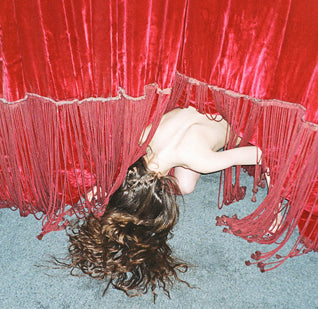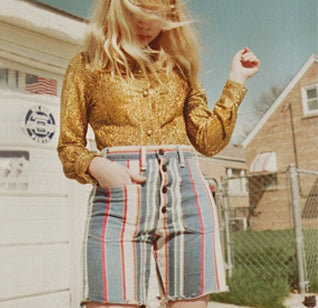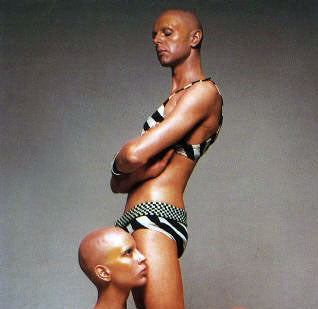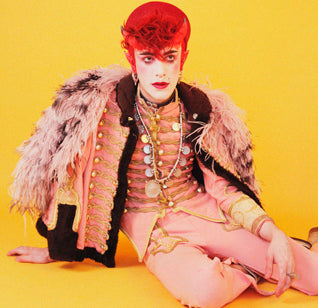THE GIRLY GIRL: OWNING HER FEMININITY IN THE SOCIAL MEDIA AGE
How embracing your inner ‘girly girl’ is empowering
by Leah Sinclair
What defines a girly girl to you? Is it the amount of shades of pink you can find in her wardrobe or the large stack of makeup products ranging from Chanel to MAC? Or is it just an attitude, and a lifestyle, which is often mocked for its stereotypical superficial nature? Whatever it is you think of the quintessential ‘girly girl,’ she is happy to embrace those things and more, with a level of confidence and pride than ever before. She is a celebration of femininity and owns the stereotypical traits associated with a girly girl, while having the ability to be more than what society defines her to be. And this is becoming more empowering than any of us could have imagined.

The girly girl is often associated negatively for displaying stereotypical characteristics, which comes with being a girl. From wearing heels and make up, to a distain for sports, and developing general attachments coded to all things…well girly. While this image has often fallen on hard times, from being undermined by men to even being frowned upon by women – the girly girl continues to persevere, and can even be seen as a way of empowering women through embracing these ideas of femininity.

“Pretty on the Inside”, from a selection of photos by Dana Boulos.
Lipstick feminism personifies this idea of embracing traditional concepts of femininity and identifying that these concepts can empower women. As a variety of third-wave feminism, lipstick feminism presents the ideas that women can embrace all these attributes, which are portrayed negatively in society, and own them in all their stereotypical glory. While this form of feminism has definitely drawn in many criticisms for its controversial and contradictory elements, women like Helen Gurley – who was behind Cosmopolitan magazine from the 1960s-1990s – ushered in a new era of feminism. Gurley celebrated feminine attributes that many try to disregard today. From the pages of magazines, to the Tumblr accounts of girls around the world – girliness is being celebrated in many different forms, in its most cartoonish and stereotypical ways ever.

Photo mash-up by KOD collective.
Social media has a large impact in the celebratory expression of girliness, uniting females all over the world one like, reblog and retweet at a time. Pinterest is credited with having “a female audience which is changing social marketing” according to Mashable, with the majority of pinners being girls who use the platform to display their favorite fashion, beauty, quotes and depictions of girliness on the site. The use of visual platforms like Tumblr and Pinterest allows women to express themselves without prejudice and judgment, while uniting with other girls who are into the same thing. If that isn’t a form of girl power, I don’t know what is.

“Plastics” by Beth Siveyer.

Photo mash-up by KOD collective.
The new girly girls are redefining feminism as a millennial generation of girls are changing the stereotypical myth associated with girliness. From Petra Collins – a respected photographer, and creator of female photography platform The Arduous – to Rookie mag creator Tavi Gevinson, and most notably, photographer and cyber phenomenon Arvida Byström. Her decision to work heavily with pastel colours, punchy pinks and typical girly tropes is deeply connected to her relationship with feminism, and removing the outdated idea that traditional girliness is not to be taken seriously. Instead, we are seeing young women like Bystrom embrace the fact that strong, smart, well rounded women can appreciate things coded with girlieness, and are internally breaking down myths perpetrated by society that girliness is dumbed-down or inferior to other perceptions of womanhood. The new girly girl crew are disengaging from these one-dimensional portrayals of girlhood, and embracing the wide range of interests us girls have.

“Plastics” by Beth Siveyer.

“Lines & Curves” by Petra Collins & Arvida Byström.
While this new feminism has been embracing the evolving perception of the girly girl, it hasn’t always been as inclusive and supportive of its own. Criticism from other feminist plagued Cosmopolitan editor Helen Gurley for her views on womanhood, as well as many factors, which affect feminism today, including race and class. There are many divides and issues within the feminist ideology which need to be acknowledged to truly move forward with its message, as well as a needing to embrace diversity and the different ways we view feminism. Because I may not have read The Second Sex, and haven’t read the entire works of bell hooks and Simone de Beauvoir, doesn’t make me less of a feminist? But this hierarchal mentality is one of the issues we must combat in our journey as we move forward to create a feminist movement, which is truly inclusive for all us girls.

“Pretty on the Inside”, a selection of photos by Dana Boulos.
Today, the 2015 girly girl isn’t to be judged or negatively stereotyped. She isn’t just interested in sequins, splashes of pink, and all the stereotypical associations with femininity. She can be so much more and fully express herself on these social platforms. But even if she was just into these things — being a self proclaimed ‘girly girl’ and embracing those traits that come with it doesn’t make her one-dimensional. So what if she likes wearing pink, and wears heels 24/7? Has a penchant for glitter and romantic comedies? She owns all those quirks, regardless if they are considered stereotypical or not. While the ‘girly girl’ in the past may have been associated with embracing stereotypical gender characteristics that doesn’t benefit the feminist movement, today in the social media age, it’s beginning to be a huge unifier amongst girls celebrating one another and loving these parts of themselves regardless of the backlash they may face. A girly girl on the inside and outside, complete with a mind of her own and a perfect manicure to boot.




































